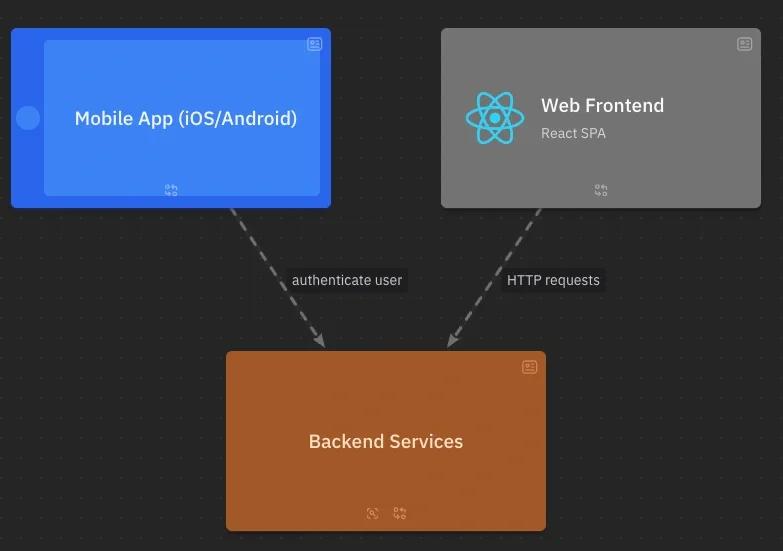1 Introduction
Architecture diagrams often become outdated. When teams rely on manual drawing tools, the version in the diagram diverges from the system in production.
The “Architecture as Code” paradigm strives for a single source of truth: treat your architecture model like code, version it, evolve it alongside the system.
LikeC4 is a domain-specific language (DSL) created for exactly that purpose.
It builds on the ideas of the C4 Model (Context → Container → Component → Code) but offers more flexibility: you define your own element kinds and arbitrary nesting levels.
Talk is cheap, here is the code to get you started immediately!
2 What LikeC4 offers
Each project that uses LikeC4 would consist of:
- A
specificationblock where you define kinds of elements (actor, system, service, etc) and optionally their default styling. This can be defined in a spec.c4 file - A
modelblock where you instantiate elements, nest them, define relationships - A
viewsblock where you specify which parts of the model to render in each diagram (via include/exclude predicates) and optionally style overrides for that view
3 LikeC4 Diagrams
In the sample code you can see the following diagrams/views of an imaginary saas.
Keep in mind that you can create as many views as you want, depending on the viewer.
So if you create views for business people, you might want to keep it high level.
If you create views for more technical people, you can create more technical views.
3.1 System Landscape
This is the top level view where we see the users, our saas platform and the payment gateway:
3.2 Containers of the saas platform
This is the second level of our architecture:
3.3. Backend Component View
Here we see all the backend components of our saas:
4 Running Locally
In the sample code you can find the following script that allows you to run LikeC4 locally in a docker container:
docker run --rm \
-v "$PWD":/data \
--init \
-t \
-p 5173:5173 \
-p 24678:24678 \
-e CHOKIDAR_USEPOLLING=1 \
-e CHOKIDAR_INTERVAL=200 \
likec4/likec4 \
start5 Tips for using LikeC4 effectively
- Define element kinds at the start of the file or in a specs.c4 file. Consistent kinds make views predictable and prevent duplication
- Use multiple views to simplify viewing and reading
- Instead of showing every component in one diagram, split into views(landscape, container, component, and others). Stakeholders will find it easier to follow.
- Integrate diagrams into your documentation site
6 Three gotchas to watch out for
- Too many nesting levels
- Deep hierarchies make diagrams unreadable. Limit nesting to meaningful groupings.
- Over-customizing styles
- Visual clarity should outweigh decoration. Use minimal color and icon changes to keep emphasis clear.
- Neglecting view updates
7 Conclusion
LikeC4 treats architecture as part of the codebase rather than an external artifact.
The result is consistent, reviewable, and living documentation. With Docker, you can test or generate diagrams in minutes, no installation required.
Architecture as Code is not a slogan—it’s a practical step toward keeping what you draw aligned with what you deploy.


